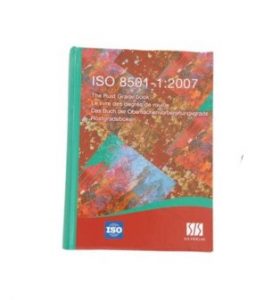Elcometer 128 Pictorial Surface Standards

Product Description
Surface contamination from salts such as chlorides, sulphates and nitrates have been shown to lead to blistering of organic coatings, particularly in immersion conditions.
It is not sufficient to measure the cleanliness of the substrate. In a multi-layer coating process, it is necessary to monitor and record the cleanliness of each layer prior to applying the next coating. When using amine cured epoxy coatings, for example, in low ambient temperatures or in high humidity, a surface oiliness or exudate may cause inter-coating adhesion failure.
Elcometer 128 Pictorial Surface Standards are high quality photographs which are used for comparison purposes to assess the visual appearance of a steel surface.
Elcometer’s range of Surface Standards covers most of those required for surface cleanliness.
The Elcometer 128 Pictorial Surface Standards can be used in accordance with:
• BS EN ISO 8501-1:2007
• SIS 055900*
*The Standards not in bold have been superseded but are still recognised in some industries
Specifications
| Part Number | Description | |
 |
E128—-1 | BS EN ISO 8501-1:2007/SIS 055900 – the original visual surface standard. It shows the degree of cleanliness of different levels of rusted steel cleaned by blasting, hand and power tools and flame, specified by ASTM D2200 Method A |
Packing List
- Elcometer 128 Pictorial Surface Standards
Data Sheet
Standards
The Elcometer 128 Pictorial Surface Standards can be used in accordance with:
• BS EN ISO 8501-1:2007

